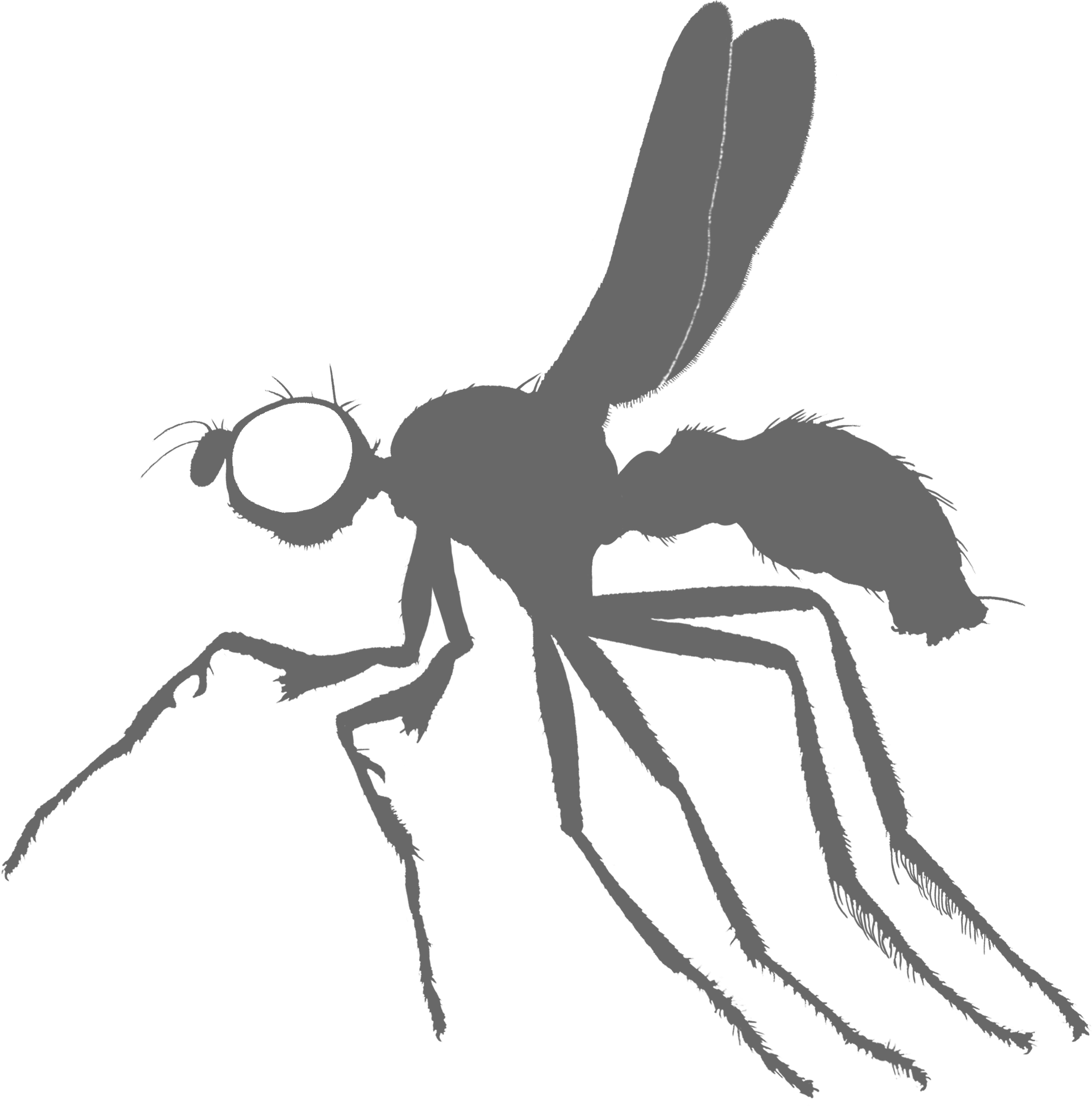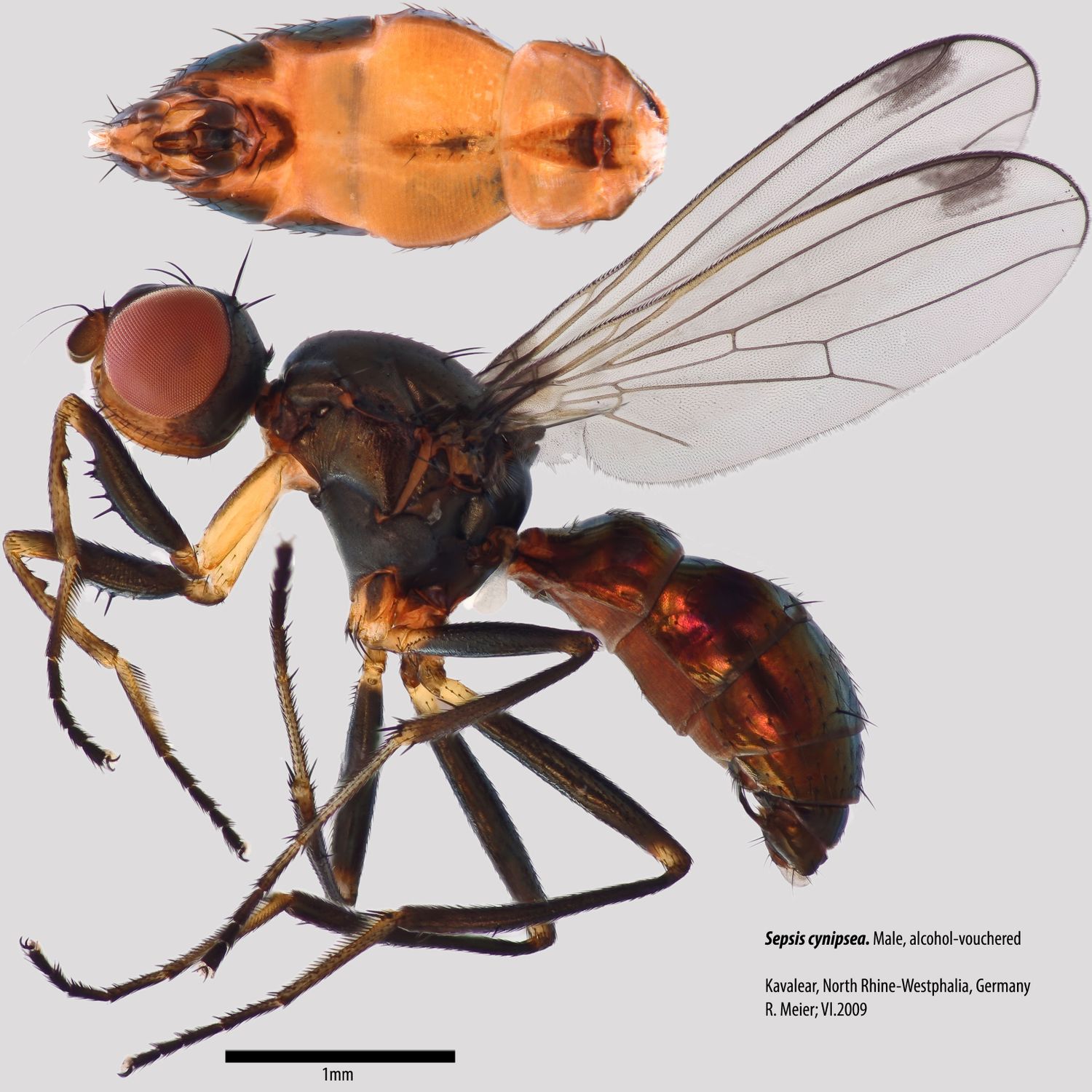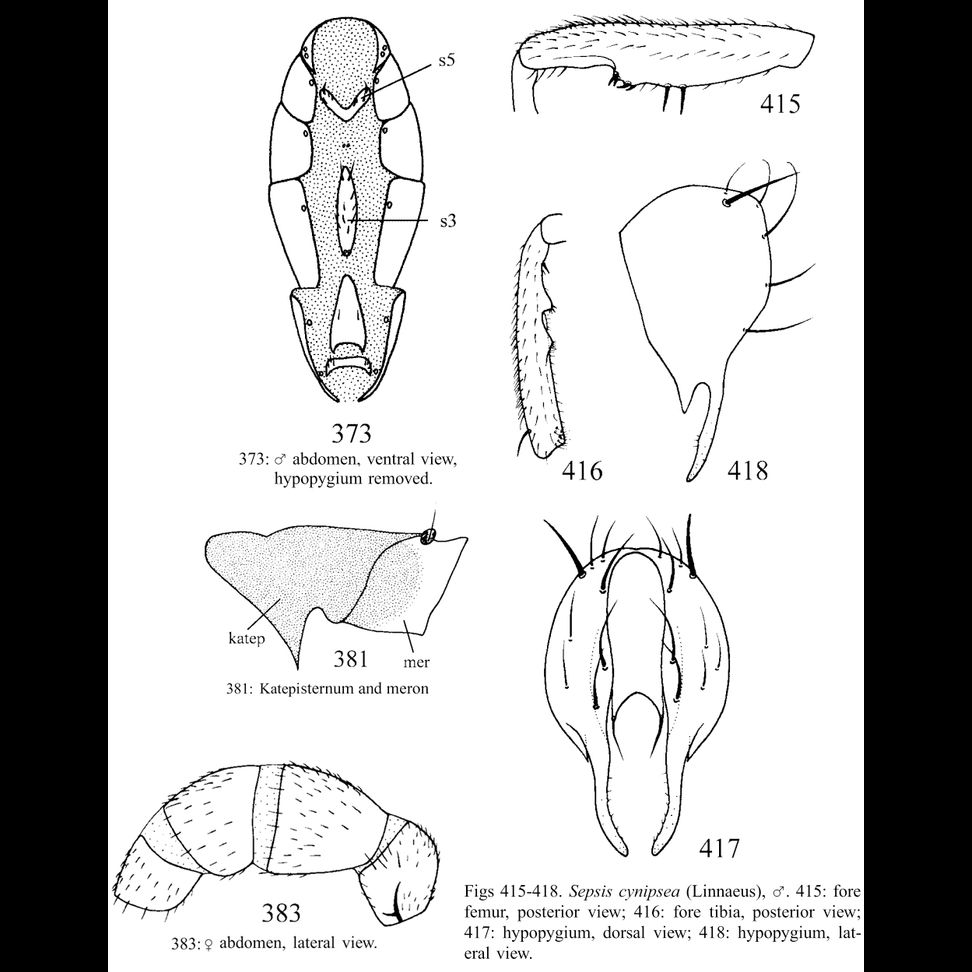

Male

Sepsis cynipsea. Male alcohol-vouchered specimen.
Deposited at: Evolutionary Biology Laboratory, National University of Singapore (Singapore)

Diagnostic illustrations for adults
Adapted from:
Pont AC & Meier R (2002). The Sepsidae (Diptera) of Europe. Brill: 1-188.
Adult cynipsea can be recognised in the male sex by the characteristically incised fore tibia (see legs). The female has katepisternum wholly pruinose and meron glossy on posterior half (see habitus), and can usually be distinguished from neocynipsea female by the absence of a submedian anterior seta on mid femur.
Source:
Pont AC & Meier R (2002). The Sepsidae (Diptera) of Europe. Brill: 1-188.
Sepsidae: Sepsinae: "Higher sepsids": Sepsis
SEPSIS CYNIPSEA Linnaeus 1758 (as Musca). Europe: habitat in Europa. Holotype ♂, in Linnean Society of London, London, UK.
elongata Müller 1764. Denmark: in hortis [from title: Sjaelland, Frederiksdal]. Syntypes, sex not stated, presumed destroyed.
hilaris Meigen 1826. Germany(?): not stated [probably GERMANY: Stolberg]. Holotype ♀, in Muséum National d’Histoire Naturelle, Paris, France.
barbipes Meigen 1826 (as Micropeza). Germany(?): not stated [probably GERMANY: Stolberg]. Holotype ♀, in Muséum National d’Histoire Naturelle, Paris, France.
vivida Robineau-Desvoidy 1830. France(?): not stated [FRANCE, probably Saint-Sauveur]. Syntypes, sex not stated, presumed destroyed.
incisa Strobl 1894. Austria: Kaiserau, Scheibleggerhochalpe, and Bösenstein. Syntypes 10 ♂♂, in Naturhistorisches Museum der Benediktiner- Abtei, Admont, Austria. [As a variety of cynipsea].
Source:
Ozerov 2005, World Catalogue of the Family Sepsidae (Insecta: Diptera), Zoologicheskie issledovania 8.
Palaearctic (Asia): Azerbaijan, Armenia, Japan(Hokkaido Is.), Kazakhstan, Kyrgyzstan, Mongolia, Republic of Georgia, Russia (Altay,Amurskaya Oblast’, Buryatia, Chelyabinskaya Oblast’, Chitinskaya Oblast’, Irkutskaya Oblast’,Kamchatskaya Oblast’, Krasnoyarskiy Kray, Novosibirskaya Oblast’, Omskaya Oblast’,Primorskiy Kray, Sakha, Sakhalinskaya Oblast’, Tomskaya Oblast’, Tyumenskaya Oblast’), Syria, Turkey.
Palaearctic (Europe): Austria, Belarus, Belgium, Bulgaria, Czech Republic, Denmark, Estonia, Finland, France (incl. Corsica Is.), Germany, UK, Hungary, Ireland, Italy, Latvia, Liechtenstein, Lithuania, Norway, Poland, Romania, Russia (Alania, Arkhangel’skaya Oblast’,Bashkortostan, Belgorodskaya Oblast’, Bryanskaya Oblast’, Dagestan, Ivanovskaya Oblast’,Kaluzhskaya Oblast’, Karelia, Krasnodarskiy Kray, Leningradskaya Oblast’, Lipetskaya Oblast’,Moskovskaya Oblast’, Murmanskaya Oblast’, Nizhegorodskaya Oblast’, NovgorodskayaOblast’, Penzenskaya Oblast’, Permskaya Oblast’, Pskovskaya Oblast’, Ryazanskaya Oblast’,Samarskaya Oblast’, Saratovskaya Oblast’, Smolenskaya Oblast’, Stavropol’skiy Kray, Tverskaya Oblast’, Vladimirskaya Oblast’, Volgogradskaya Oblast’, Voronezhskaya Oblast’, Yaroslavskaya Oblast’), Slovakia, Spain, Sweden, Switzerland, Turkey, Ukraine, former Yugoslavia.
Palaearctic (North Africa): Algeria, Morocco.
Source:
Ozerov 2005, World Catalogue of the Family Sepsidae (Insecta: Diptera), Zoologicheskie issledovania 8.